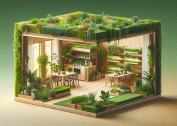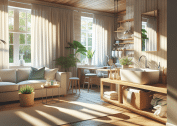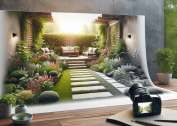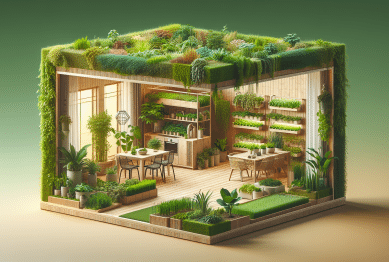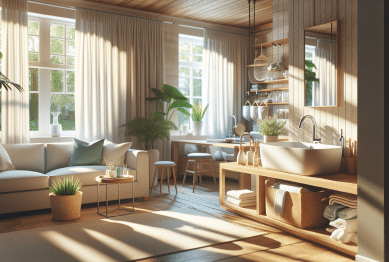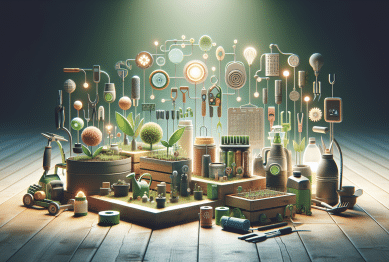Minimalist home design is more than just a design trend—it’s a lifestyle that focuses on simplicity, functionality, and intentionality. By embracing minimalist principles in your home, you can reduce clutter, create a calm environment, and improve your overall quality of life. Through minimalism, you can transform your living space into a peaceful sanctuary that promotes clarity, productivity, and well-being. In this article, we’ll explore how minimalist home design can simplify your life and help you focus on what truly matters.

What is Minimalist Home Design?
Minimalist home design is rooted in the principle of “less is more.” It focuses on clean lines, neutral colors, and an organized layout with a focus on functionality over decoration. The aim is to create a space that feels open, uncluttered, and calming, which encourages mental clarity and reduces distractions.
-
Simplicity: Minimalism eliminates excess, leaving only what is functional and meaningful.
-
Functionality: Every item in a minimalist home serves a purpose. Spaces are designed to be both beautiful and practical.
-
Intentionality: In minimalist design, every decision—whether it’s choosing furniture, decor, or layout—is made with purpose and careful thought.
For more on minimalist design principles, see The Spruce’s Guide to Minimalist Home Design.
Why Minimalist Home Design Matters
Minimalism can significantly enhance your daily life by creating a peaceful and organized environment. By focusing on the essentials and eliminating clutter, you can experience numerous benefits, including:
-
Reduced Stress: A clutter-free space reduces mental distractions and promotes relaxation, helping to alleviate stress.
-
Improved Productivity: Minimalist spaces are typically more organized, making it easier to focus on tasks and be productive.
-
Better Time Management: With fewer items to manage, cleaning and organizing become quicker and less time-consuming.
-
Enhanced Mental Clarity: A simplified environment allows you to clear your mind and focus on what truly matters.
For more on the benefits of minimalist living, see Psychology Today’s article on Decluttering Your Home.
How to Simplify Your Life Through Minimalist Home Design
Here are some practical steps you can take to simplify your life by incorporating minimalist design into your home:
1. Declutter Your Space
The first step toward minimalist home design is decluttering. By removing items that no longer serve a purpose or bring you joy, you create a clean slate for a simpler, more functional living space.
-
Go Room by Room: Start with one area of your home at a time to avoid feeling overwhelmed. Sort through belongings and decide what to keep, donate, or throw away.
-
Eliminate Duplicates: Remove items you have multiple versions of, such as extra kitchen gadgets, old furniture, or duplicate décor items.
-
Focus on Quality Over Quantity: Invest in high-quality items that are durable and serve a purpose rather than accumulating unnecessary possessions.
For more on how to declutter effectively, read The Spruce’s article on Decluttering Your Home.
2. Embrace Clean, Simple Lines
Minimalist home design thrives on clean, simple lines. By choosing furniture and decor with minimal detailing, you create a visually calm and spacious environment.
-
Choose Simple Furniture: Opt for sleek, functional furniture with clean lines and neutral colors. Avoid overly ornate pieces or excessive decorations.
-
Open Layout: Open floor plans are a staple of minimalist design. By removing unnecessary partitions or walls, you create a more spacious and airy feel.
-
Minimalist Decor: Keep decorations to a minimum. Select a few key pieces that bring value or enhance the overall look of the space, such as statement art pieces or plants.
For more on minimalist furniture and décor, check out Apartment Therapy’s Guide to Minimalist Design.
3. Use Neutral Colors to Create Calm
Neutral colors are a hallmark of minimalist design. By choosing a muted color palette for walls, furniture, and décor, you create a serene atmosphere that promotes relaxation and clarity.
-
Soft Neutrals: Choose whites, grays, and soft earth tones to create a clean, calming environment.
-
Accent Colors: Use accent colors sparingly to highlight specific areas or pieces of furniture. Subtle pops of color, such as navy or mustard, can add visual interest without overwhelming the space.
For more on how colors affect your space, see Psychology Today’s article on the Psychology of Color in Interior Design.
4. Invest in Multifunctional Furniture
In minimalist design, every item in your home should serve a purpose. By investing in multifunctional furniture, you can maximize space while keeping your home organized and efficient.
-
Storage-Friendly Pieces: Look for furniture that doubles as storage, such as ottomans with hidden compartments, beds with drawers, or coffee tables with built-in shelving.
-
Compact Solutions: Use smaller, space-saving pieces, especially in smaller homes or apartments, to ensure every square inch is utilized efficiently.
For more on multifunctional furniture, read Good Housekeeping’s article on Space-Saving Furniture Ideas.
5. Limit Personal Items and Decorations
Minimalist design calls for thoughtful selection of personal items and decorations. By focusing on only those items that bring you joy or serve a specific function, you can create a more peaceful and clutter-free home.
-
Personal Touches: Limit the number of personal photographs, trophies, or memorabilia in your space. Instead, display only your most meaningful or aesthetically pleasing items.
-
Minimal Decor: Choose simple, elegant decor pieces that complement the overall design of your space. For example, one or two vases, candles, or small sculptures are enough to add style without creating clutter.
For more on minimal home decor, see The Spruce’s guide to Minimalist Interior Design.
6. Organize for Long-Term Maintenance
Once you’ve simplified your home design, it’s essential to maintain an organized, clutter-free environment. By establishing systems for organization and cleaning, you can keep your space neat and functional.
-
Storage Solutions: Use baskets, bins, or shelves to store small items and keep them out of sight. Label containers for easy identification.
-
Daily Maintenance: Set aside time each day to tidy up and put items back in their designated spots. This prevents clutter from accumulating over time.
For more on maintaining an organized home, check out MindTools’ article on Organizational Skills.
Conclusion: Simplify Your Life with Minimalist Home Design
Minimalist home design is not just about aesthetics—it’s about creating a space that promotes peace, efficiency, and clarity. By decluttering your space, choosing simple and functional furniture, embracing neutral colors, and investing in multifunctional items, you can create a home that supports a calm and fulfilling lifestyle. Start small, make thoughtful decisions, and enjoy the long-term benefits of a minimalist living space.
References:
-
The Spruce. (2021). How to Declutter Your Home. Retrieved from https://www.thespruce.com/decluttering-home-organization-2641454
-
Psychology Today. (2020). How Decluttering Your Home Can Improve Mental Health. Retrieved from https://www.psychologytoday.com/us/articles/2020/04/the-mental-health-benefits-of-decluttering
-
Apartment Therapy. (2021). Minimalist Style: The Ultimate Guide. Retrieved from https://www.apartmenttherapy.com/minimalist-style-guide-367148
-
Good Housekeeping. (2021). Space-Saving Furniture Ideas for Small Homes. Retrieved from https://www.goodhousekeeping.com/home/organizing/

